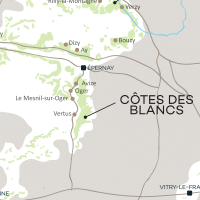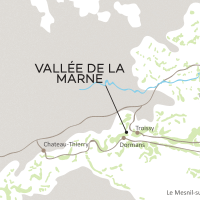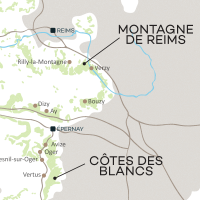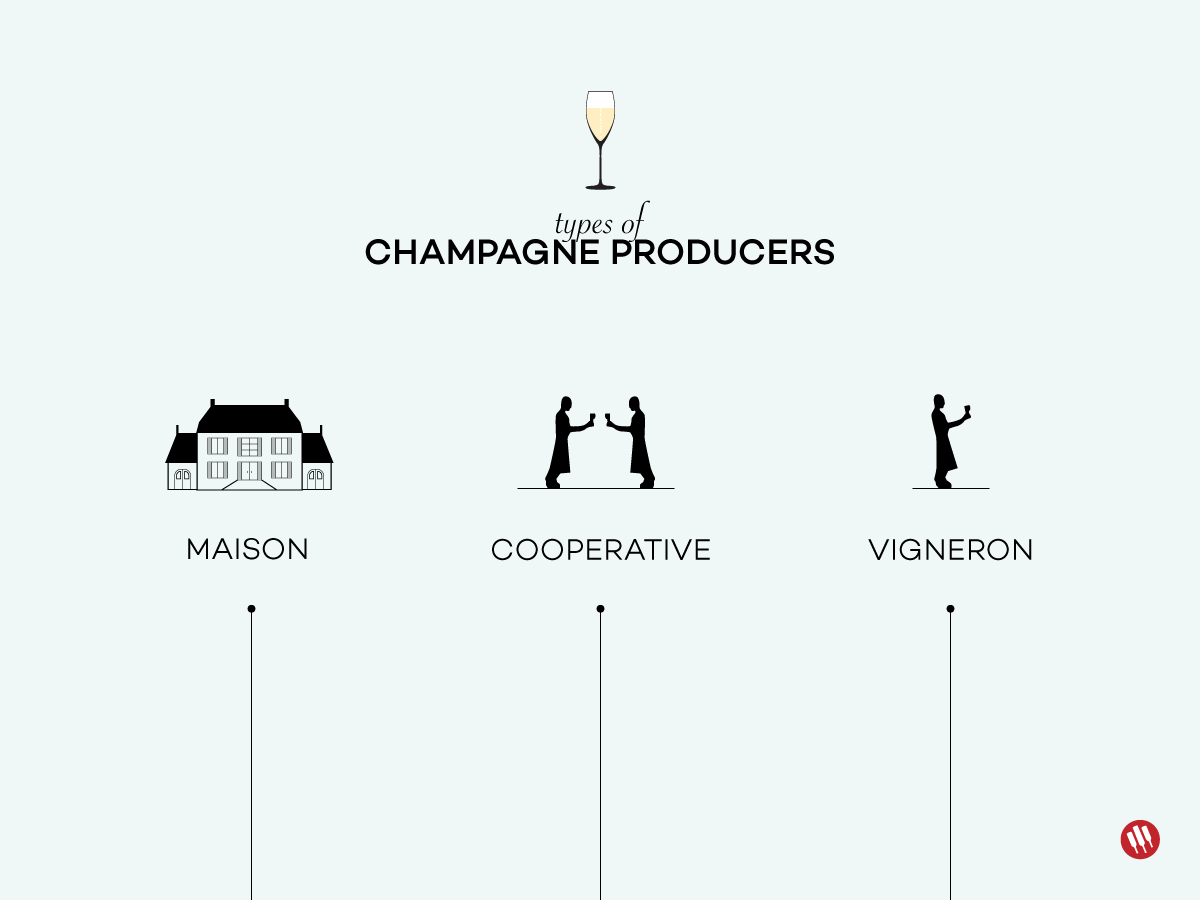We worked with expert, Bryan Maletis, who runs fatcork.com to help create a guide to grower Champagne. Learn some interesting details about Champagne that will surprise you and find out how to select small-producer Champagne.
What is Grower Champagne?
Grower Champagne is sparkling wine crafted by grape growers and their families. It embodies those who grow grapes in their own vineyards and produce cuvées (aka sparkling wine blends) that reflect their distinct vineyards and style.
Do you like the unique character of farm fresh eggs or single origin coffee and chocolate? Well, Grower Champagne is similar in that it rarely tastes the same every year and each producer is different. Of course, this is part of what makes it so compelling.
What does Grower Champagne taste like?
Grower Champagnes come in a very wide range of styles. What’s been noted about these bubbly wines is that the individual work of the growers really comes through in the finished cuvée. See below for details of several common styles of Champagne.
3 Types of Producers in Champagne
There are three general classifications of Champagne producers imported into the USA: Maisons, Cooperatives and Vignerons.
Maisons
Large Champagne Houses
Maisons (aka ‘Houses’) make up 87% of the Champagnes imported into the USA. Champagne houses buy their grapes from lots of grape growers from all over the region. The Maisons focus on blending grapes from different regions and vintages to produce a consistent taste every year.
How to recognize: Maisons are the large Champagne brands or ‘negociants’ (neg-gosse-see-yont) that may have familiar names such as Moët, Veuve Clicquot, Perrier, Bollinger, etc. Maison Champagnes are widely available and are famous for making appearances at fancy events. Chances are, if you’re at an Oscars afterparty, you’re probably sipping a Maisons de Champagne!
Cooperatives
Co-op Champagne Facilities
Co-ops are typically wines from a specific village in Champagne and from grapes grown around that village. Growers who don’t have all the sparkling wine making equipment can opt into a village co-op. There are many different ways in which co-ops function, but usually, the growers supply their grapes to the co-op and the chief winemaker makes the final cuvées. The Champagnes can be labeled individually for the growers and they can be labeled as the co-op brand.
How to recognize: Cooperative Champagnes are typically labeled with the letters ‘CM’ for ‘Coopérative Manipulant’ in small print on the bottom of the front label. However, there are a few other types of producer who use co-ops (see below).
Vignerons
Grower Champagne
These are the grower-producers. The word ‘vigneron’ roughly translates to winegrower or more specifically, someone who cultivates a vineyard for winemaking. Growers typically own small parcels of vineyards in very specific places within the Champagne region. They tend to their vines all year and harvest their grapes on their own. Because their sparkling wines are crafted with grapes from specific parcels of land and blended in small lots, they tend to taste very distinct and different every year.
How to recognize: A good tip is to look for hyphenated names. Growers often label their sparkling wines using their last name, along with a hyphenated maiden name (or two) that typically comes from the grower’s mother or spouse. This is done to honor the heritage of the land. Also, see the official producer types below for more tips.

Hints on the Champagne Label:
In total, there are 7 official producer types that are identifiable by two letters small print at the bottom of the front label. Use these letter as a hint to the producer type, but remember, there are occasionally exceptions to these regulatory classifications:
- NM
- ‘Négociant Manipulant’ A producer who buys all or some of their grapes from other growers. Anything less than 94% estate fruit must be labeled NM. Maison Champagne is labeled with this producer class, but it’s not entirely uncommon to see grower Champagne under this classification as well.
- CM
- ‘Coopérative Manipulant’ A grower’s co-op that pools resources and produces wine under a single brand.
- RM
- ‘Récoltant Manipulant’ A grower-producer who uses a minimum of 95% estate fruit. This is classically considered the grower Champagne producer type, although, it’s possible for a Maison to use this classification on a sub-label or brand.
- SR
- ‘Société de Récoltants’ A union of growers who shares resources and collectively markets their own brands.
- MA
- ‘Marque d’Acheteur’ aka ‘Buyer’s Own Brand’ A large retail or restaurant that buys a finished wine and sells it under their own private label.
- ND
- ‘Négociant Distributeur’ A buyer who labels and distributes Champagne that they didn’t grow nor produce.
- RC
- ‘Récoltant Coopérateur’ A grower-producer who has their own Champagne brand made at a co-op facility.
“Champagne is on the verge of a profound change… The era of great growers and great vineyards is just beginning.”
Andrew Jefford, The New France
Is Grower Champagne Better than Cooperative and Maison Champagne?
No. While Grower Champagne is certainly more artisanal, it’s not necessarily better than Maison Champagnes; this a matter of personal preference, taste and occasion.
Recent Top/Best Champagne Vintages to Seek Out
- 1996, 2002, 2004, 2008
The best vintages in Champagne over the last 20 years are debatable and have a lot to do with the individual producer, but, 1996, 2002, 2004, and 2008 are pretty great across the spectrum. Find out more about cool climate wine regions
Quick Breakdown: 5 Primary Styles of Champagne
If you’re just getting into the different styles of Champagne, here are some useful tips on where to find the style you like:

Brut Nature Champagne
Bone Dry & Minerally
Expect to spend: $50–60
Very dry with keen acidity backed up with citrus and floral notes. Because these are dry with high acidity, they aren’t for the timid and probably shouldn’t be tasted immediately after brushing your teeth! Brut Nature is a great wine to pair with a wide range of foods for its palate cleansing effects.

Blanc de Blancs
The 100% Chardonnay Champagne
Expect to spend: $40–50
Chardonnay is full of white flower and citrus aromas and depending on where it’s grown, it can also have flavors of chalk and minerality. As Blanc de Blancs age, they develop aromas of fresh baked bread, butter, and roasted nuts.

Blanc de Noirs
Fruity & Funky
Expect to spend: $30–40
Blanc de Noirs have rich aromas of white raspberry and apple and sometimes a subtle funky note that is often described as Parmesan cheese. A Pinot Meunier dominant Blanc de Noirs tends to be more funky and is meant to be drunk relatively young to preserve acidity.
Rose Champagne
From Minerals to White Cherry Cream
Expect to spend: $55–65
Rosé Champagnes come in a wide variety of tastes and colors. Some are almost orange, some are deep red, some are totally dry and tart, and some are full of ripe, red berry flavors. These wines differ based on the producer, where they are from, the Champagne sweetness level and the vintage.

Vintage Champagne
Creamy & Nutty
Expect to spend: $55+
Marzipan, honeycomb and hazelnut are often noted on vintage Champagne as well as baked apple, white cherry and lemon curd. Vintage Champagne must be aged for a minimum of three years and, the longer it ages before release, the more creamy and nutty it becomes. Therefore, the older the vintage, the more developed it will be with nuttiness. num.
How to find great Vintage Champagne?
Look for ‘recently disgorged’ vintage Champagnes where the producers have done extended aging on the lees in their caves. Many growers label disgorgement dates on their bottles so you know when it left their cellar; this is useful in determining how long the wine has been sitting on a shelf getting UV damage!




